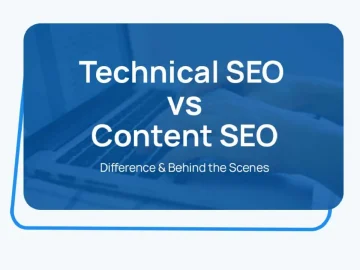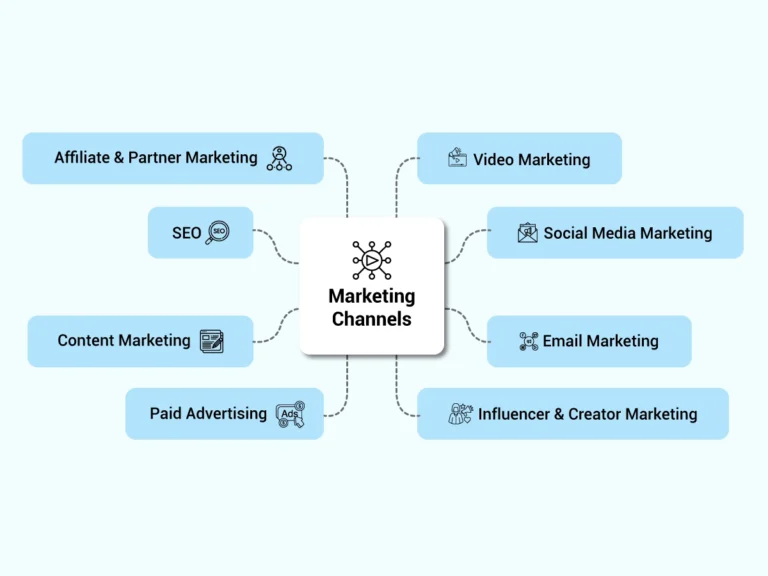Mastering SEO is the key to success in the dynamic digital landscape of online business. As businesses strive to increase visibility and user engagement, the technical SEO vs content SEO discussion takes center stage.
This comprehensive guide delves into technical SEO, focusing on website infrastructure and performance. And in line comes content SEO, honing in on the art of crafting compelling, keyword-rich content.
We have demystified the nuances of these two SEO pillars in this article. Therefore, it serves as a roadmap for marketers, webmasters, and business owners. This guide helps you strike the perfect balance for a holistic SEO approach that propels your digital presence to new heights.
What is Technical SEO?

Technical SEO refers to optimizing a website’s technical aspects to improve its visibility and performance in search engine rankings. It involves making the best use of elements that search engines understand and index web pages. The key elements include website speed, mobile responsiveness, and site structure.
Technical SEO ensures that search engines can easily crawl and index content. The technical intricacies make your site more likely to appear in relevant search results. Key aspects include optimizing meta tags, fixing broken links, improving site speed, and creating a sitemap.
In fine, technical SEO focuses on the behind-the-scenes elements that contribute to a website’s overall health and ability to rank effectively. As a result, it gets displayed in search engine results.
A thorough SEO audit of your business will find out technical issues. Addressing them flawlessly can improve your site’s user experience – a crucial factor in search engine rankings.
Why is Technical SEO Important?
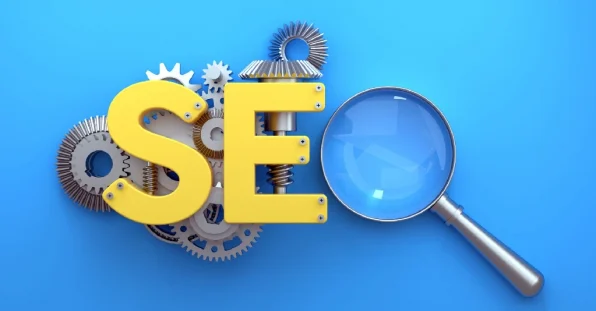
Technical SEO is crucial to confirm a website’s top performance in search engines. It preserves the crawl budget by making content easily accessible to search engine crawlers. It also caters to evolving search trends, such as featured snippets and voice searches.
Lastly, technical SEO aligns with user-centric key performance indicators (KPIs). That adds to the overall improvement of your online venture. Read for more details.
Preserving Crawl Budget
The crawl budget refers to the time and resources search engines allocate to crawl and index a website’s content. Technical optimization of content and site is essential for preserving this budget by ensuring efficient crawling. As said earlier, optimizing site structure, fixing broken links, and managing redirects are crucial steps in this regard.
When search engines can easily navigate a site, they allocate more of their crawl budget. Thus, relevant content gets indexed, improving the site’s visibility in SERPs.
Featured Snippets & Voice Searches
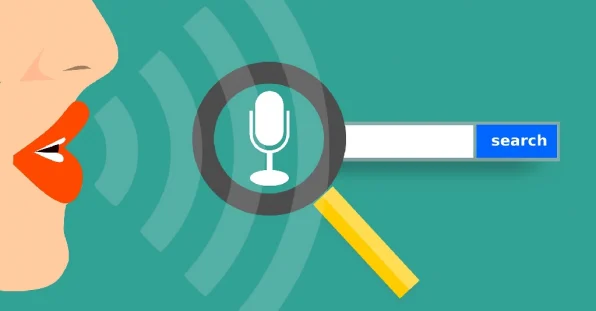
Technical SEO is the cornerstone to line up content with contemporary search trends. Notable mentions include the most talked about featured snippets and voice searches. To rank as the coveted featured snippets, websites must embrace structured data.
Structuring data ensures information is presented in a format easily digestible by search engines. The art of concise content and strategic formatting becomes paramount. In fact, that way, you can and should provide a roadmap for search engines to showcase snippets of valuable information.
Voice search optimization, another facet of technical mastery, demands a nuanced approach. It involves crafting content with natural language flair, allowing websites to respond effectively to voice queries. Here, the emphasis is on brevity, delivering informative answers briefly.
By implementing these technical SEO strategies, websites increase their chances of appearing in featured snippets. Thus, they satisfy voice search queries, lining up with evolving search trends and user preferences.
User-Centric KPIs
The technical precision of your site directly influences user-centric key performance indicators (KPIs) like page speed and mobile responsiveness. Optimizing for speed involves reducing page load times, resulting in a positive user experience and lower bounce rates.
Mobile responsiveness ensures that a website is accessible and user-friendly for various devices. These technical aspects contribute to a seamless user experience. Doing so with precision can enhance engagement and satisfaction, positively impacting search engine rankings.
What Does Technical SEO Include?
This suite of technical SEO practices delves into the intricacies of guiding search engine crawlers, optimizing content discovery, and ensuring seamless user experiences. Let’s explore the pivotal components of Technical SEO, each of which plays a crucial role in shaping a website’s digital footprint.

Robots.txt
Robots.txt is a crucial file, most technical for me, that plays a pivotal role in guiding search engine crawlers. It serves as a set of instructions for search engine bots, indicating which parts of a website should be crawled and which should be excluded.
By strategically using robots.txt, webmasters can prioritize important content. And thus, they prevent search engines from wasting time on irrelevant or sensitive information. It’s a fundamental tool in shaping how search engines perceive a website. That ensures that your resources are efficiently allocated for crawling and indexing.
XML Sitemaps
XML sitemaps is a roadmap for search engine crawlers, providing a pre-formatted outline of a website’s content order. They contain a list of URLs along with additional information like the last modification date and priority level of each page.
By submitting XML sitemaps to search engines, webmasters augment the crawling process. That’s how it helps search engines understand the hierarchy of content. XML sitemaps ensure that all relevant pages are discovered and indexed. That significantly improves the overall visibility of a website in search engine results.
Crawling

Crawling is the process search engine bots adopt to navigate and explore web pages systematically. Technical SEO optimizes crawling by ensuring a website’s structure is clear and accessible. This involves fixing broken links, managing redirects efficiently, and creating a logical sitemap.
So, technical SEO helps search engines discover and index all relevant content by streamlining the crawling process. Unfailingly, it influences a website’s search engine visibility.
Indexing
Indexing is the step where search engines add web pages to their databases. Technical SEO plays a crucial role in influencing indexing. These strategies ensure a website’s content is easily understandable for search engines. This involves using proper meta tags, optimizing content with relevant keywords, and addressing issues that may delay or deter indexing.
A well-optimized website, what precisely the technical SEO is meant for, ensures that search engines can efficiently index its content. And the result is increased visibility in search results.
Site Speed and Performance
Site speed and performance are critical factors for both user experience and search engine experience. To enhance site speed, technical soundness involves optimizing various elements, such as images, scripts, and server response times. A faster website improves user satisfaction, resulting in lower bounce rates and higher search engine rankings.
SEO experts employ browser caching, content compression, and minimizing HTTP requests. Thus, they ensure optimal site performance across devices and platforms.
Canonicals
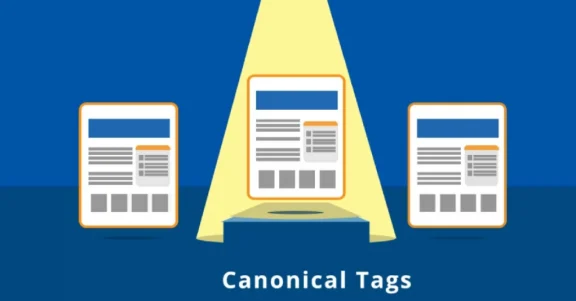
Canonical tags are HTML elements that specify the preferred version of a web page when duplicate content exists. Technical SEO utilizes canonical tags to consolidate link equity. That effectively prevents search engines from indexing multiple versions of the same content.
By indicating the canonical, authentic version, webmasters can avoid potential issues such as duplicate content penalties. Besides, it ensures search engines prioritize the most relevant and authoritative page in their rankings.
Structured Data
Structured data involves adding a specific markup to web pages. It aims to provide additional context to search engines about the content. Technical SEO optimizes structured data to upgrade the understanding of the information on a page.
The optimized page, thus, can appear in the display of rich snippets in search results. Rich snippets give users more information about a page before clicking on it. That magically improves click-through rates and overall user engagement.
Common structured data types include schema.org markup for events, reviews, products, etc.
Rendering
Rendering is the process of displaying web pages. And technical SEO ensures that pages render correctly across various devices and browsers. This involves optimizing code, stylesheets, and scripts to achieve consistent rendering. With mobile devices steeply on the rise, responsive design is a key aspect of rendering optimization.
SEO experts focus on creating a seamless and user-friendly experience, prioritizing factors like viewport settings, media queries, and flexible grid layouts. And by prioritizing rendering optimization, websites can be tailored to a diverse audience. Consequently, they see a massive improvement in their search engine rankings, leading to a positive user experience.
What is Content SEO?

Content SEO is a planned approach to creating and optimizing online content to improve its visibility and ranking on search engine results pages (SERPs). The primary goal is to attract organic (non-paid) traffic to a website by optimizing content with users’ search intent.
Efficient content SEO involves in-depth keyword research to classify relevant terms and phrases users will likely search for. Content creators put these keywords naturally into high-quality, valuable content. Contents, thus optimized, help search engines recognize the relevance and context of the topic. This tactic increases the chance of ranking higher in search results.
Moreover, optimizing on-page elements like title tags, meta descriptions, headings, and image alt text boosts a page’s prominence to search engines. Content SEO considers factors like mobile-friendliness, page speed, and user experience, as these contribute to overall search engine response.
Content SEO strategies entail regularly updating and expanding content and attracting backlinks from reputable sources. On top of these two, promoting social media is an integral part of effective content strategy for ecommerceand other online businesses.
You have to focus on user needs and craft value-added and well-optimized content. Then only your online business will find it booming in the sector and can connect with a wider audience.
Why is Content SEO Important?

Optimizing content is crucial for multiple reasons. Firstly, it pointedly impacts a website’s visibility on search engines, mainly Google. The lion’s share of online experiences now starts with a search in the popular browsers. So, a top-ranking position means a website is more likely to attract organic traffic – visitors landing on your page naturally.
This visibility is essential for reaching a broader audience. It is the proven method to increase the chances of converting visitors into customers or achieving other desired outcomes.
Moreover, content SEO aligns content with user intent. If you put relevant keywords and provide valuable information in your content, businesses can better meet the needs of their target audience. This directly improves user experience and builds credibility and trust as well. That dependence based on trust is vital for long-term success – the ultimate business goal.
Effective content SEO also fosters a competitive edge. Outranking competitors in search results is a key differentiator in a crowded online landscape. It establishes your authority within the niche. The visitors treat the website offering optimized content as a go-to resource for information.
Furthermore, content SEO supports other digital marketing efforts. Well-optimized content is more shareable on social media and is more likely to attract quality backlinks. Both lead to higher search engine responses – a rise in natural visitor numbers.
What Does Content SEO Include?
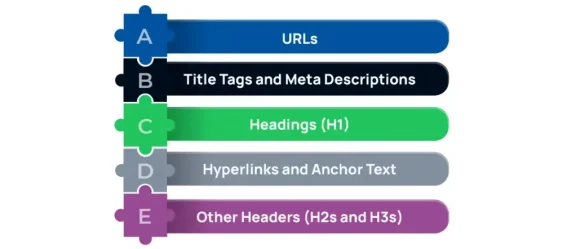
Do you want to unlock the secrets of effective content SEO? Then, you must explore key components that scale up your online presence. That requires diving deep into the essentials of URLs, title tags, meta descriptions, headings, body content, hyperlinks, and other headers. Mastering and implementing these elements guarantee both user satisfaction and a visibility boost on search engines. Read on.
URLs
URLs play a crucial role in Content SEO. An optimized URL structure is crucial for both user experience and high ranking. Descriptive, clean URLs that include relevant keywords provide users and search engines with a clear understanding of the page’s content.
For example, “https://www.example.com/best-seo-practices” is more informative than a generic URL. Additionally, a well-structured URL can be more shareable and accessible.
Search engines use URLs to determine the context and relevance of a page. That’s why incorporating target keywords in URLs can positively impact search rankings. Keeping URLs concise, logical, and reflective of the page’s content is essential. That will optimize for search engines and users alike.
Thus, optimizing URLs is a fundamental aspect of content SEO. It is essential for both user-friendly navigation and improved SEO visibility.
Title Tags and Meta Descriptions

Title tags and meta descriptions are vital elements in the on-page SEO of the content. The title tag is the HTML element that defines the title of a webpage. It appears as the main clickable link in search engine results. It should be concise, accurately represent the content, and display relevant keywords to attract both search engines and users. Thus, a title can act as clickbait for potential visitors.
Meta descriptions concisely summarize a page’s content beneath the title tag in search results. While they don’t directly impact rankings, compelling meta descriptions can significantly improve click-through rates. Like the title tag, it also can play the click-bait role by enticing users to visit the page.
Crafting unique and compelling title tags and meta descriptions for each page optimizes the snippet appearing in search results. Dosing so influences user engagement and search engine performance.
These elements serve as a crucial opportunity to communicate the gist of the content and encourage users to click. Thus, they are both essential components of effective content SEO strategies.
Headings
Headings play a crucial role in content optimization or on-page SEO. That requires structuring and organizing the content for both readers and search engines. HTML tags like H1, H2, and H3 denote different hierarchy levels.
The H1 tag typically represents the page’s main title, signaling its primary topic to search engines. Subsequent headings, such as H2s and H3s, break down the content into sections. This breaking down makes the content more readable and provides context to search engines about the content’s structure.
Well-crafted headings enhance user experience by improving content readability. Also, it contributes to SEO by highlighting key topics and keywords. Search engines use these headings to understand the content’s relevance and hierarchy. These two also influence the page’s ranking in search results.
Body Content
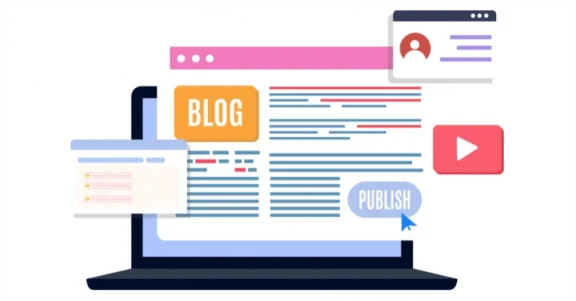
The content body of a webpage is the meat of the information meant to users. Regarding content SEO, creating high-quality, relevant, and comprehensive content that answers user intent is pivotal. Yes, search engines prioritize content that answers user queries effectively.
This entails stitching targeted keywords naturally into the text that adds to the content’s overall relevance. Also, longer-form content tends to perform well in search rankings. It often provides more in-depth information on the topic discussed. Content should be well-structured, engaging, and valuable to the audience.
That only encourages longer on-page dwell times – a positive signal for search engines. Updating and polishing the body content is like refreshing it. That sends a signal to search engines of authority buildup, contributing to improved SEO performance over time.
Hyperlinks and Anchor Text
Hyperlinks and anchor text are critical elements of Content SEO. Needless to say, it influences both user experience and search engine rankings. Hyperlinks provide pathways to other relevant pages internally within a website and externally to other reputable sources.
This interconnectivity signals to search engines the depth and breadth of content. That’s how both users and search engines acknowledge the website’s overall authority.
Anchor text, the clickable text within a hyperlink, serves as a valuable indicator of the linked page’s content. The smart and planned use of anchor text with contextual keywords helps search engines understand the context and relevance of the linked content.
However, it’s important to use hyperlinks and anchor text sensibly. Their careful and optimized use enhances the user experience by providing additional information or resources. On the contrary, being overused and irrelevantly positioned for SEO manipulation can result in penalties from search engines.
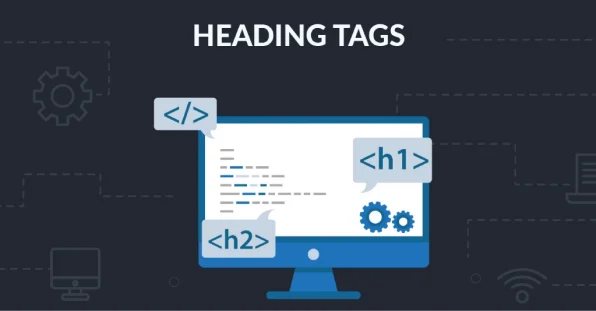
Other Headers (H2s and H3s)
Other headers, specifically H2s and H3s, contribute to the organization and structure of content. And the obvious fruit is enhanced user experience and search response. Similar to the main heading (H1), these subheadings clarify different content sections.
From an SEO perspective, they offer an opportunity to incorporate additional keywords and variations. Thus, how they effectively signal to search engines the breadth of topics covered. Well-organized content with a clear hierarchy helps search engines understand the thematic flow. And thus, assisting users in quickly navigating and finding relevant information is the by-product of well-crafted content.
Above all, breaking down content into smaller, compelling sections with H2s and H3s contributes to readability. And that’s how to encourage users to stay on the page longer. This is the smart combination of improved user engagement and SEO-friendly organization. And this engagement caused by the smart use of H2s and H3s is one of the most valuable practices in Content SEO strategies.
FAQs
Technical SEO involves optimizing a website’s technical aspects to improve search engine visibility. The prominent inclusions are site speed optimization, mobile responsiveness, sitemap creation, and addressing crawl issues. And the coveted gain is the website’s improved performance in search engine rankings.
No, off-page SEO and technical SEO are quite different, but the goal is the same – increased search engine response and direct visitors. Technical SEO focuses on website infrastructure, while off-page SEO involves external factors like backlinks and social signals. As said, both contribute to overall SEO but address different aspects of online presence.
Technical SEO deals with improving the technical infrastructure of a website to make it search engine-friendly. Non-technical SEO includes content creation, user experience, and off-page factors.
However, both are integral for a comprehensive SEO strategy and so we often come across terms
Technical SEO can be challenging, requiring expertise in website development and SEO best practices. However, marketers and webmasters can successfully implement technical SEO strategies with the right knowledge and tools. Above all, improving a site’s performance in search engine results is a must.
Technical SEO Vs Content SEO: Complement or Compete?
The technical SEO vs content SEO debate has sparked numerous discussions among professionals seeking and preaching the optimal strategy for online success. This in-depth and insightful guide unravels the details of both and has made it clear that they are complement each other in boosting ranking and user experience of sites. And you cannot do the best for your online presence without technical seo services for content business.
By examining the critical components of each approach, from URL optimization to meta tags, headings, and beyond, readers will gain the needed insights into crafting a complete SEO strategy. Whether you’re navigating the technical nuances behind crawling and indexing or honing your content for user-centric appeal, this
discourse on technical SEO vs content SEO will help you make informed decisions.

